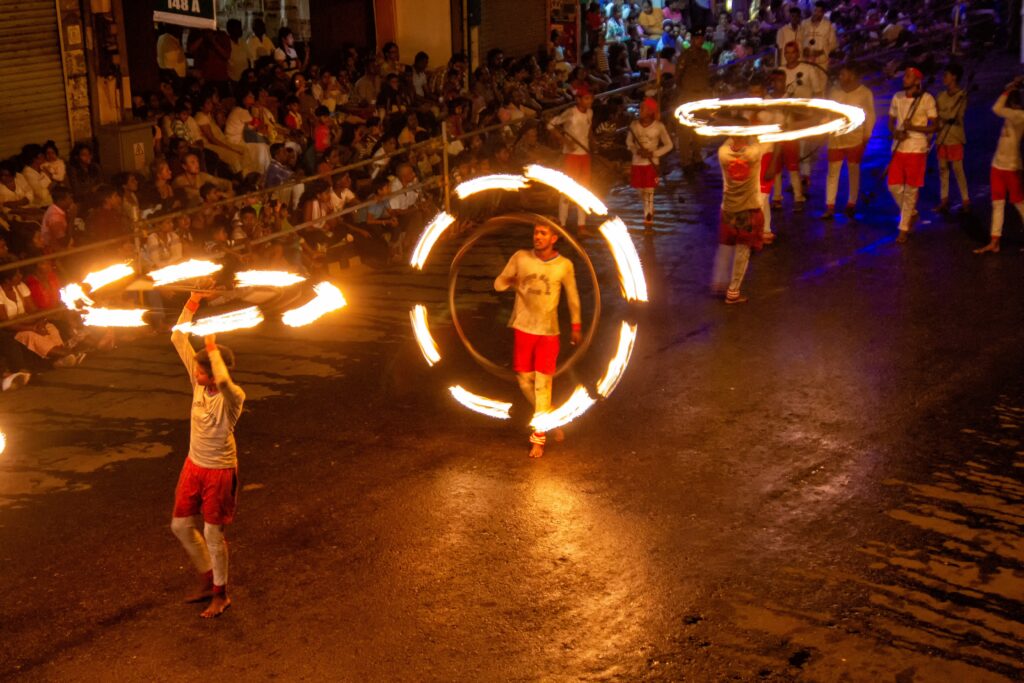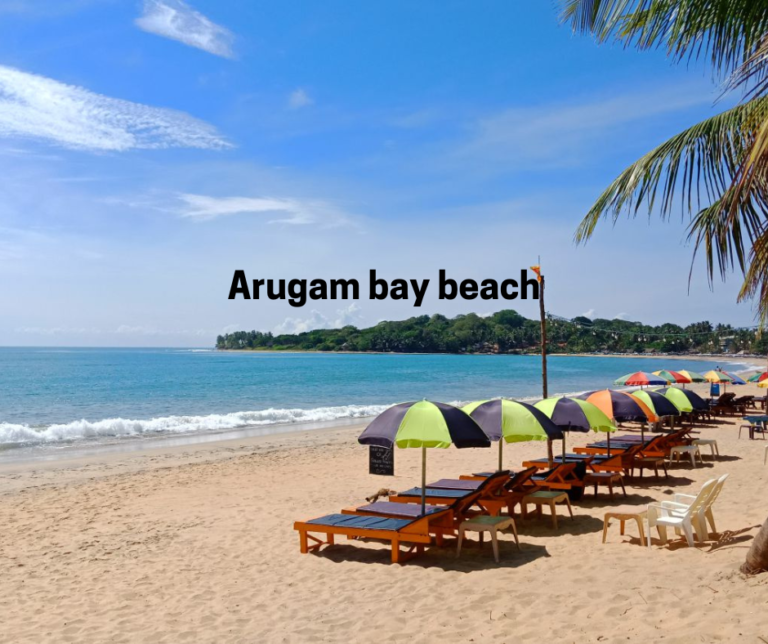Exploring Kandy, Sri Lanka: A Cultural and Historical Gem

Nestled in the center of Sri Lanka, Kandy is a city that is rich in natural beauty, culture, and history. Kandy, the final capital of the ancient monarchs’ era in Sri Lanka, is a UNESCO World Heritage Site and a cultural center of immense importance. It is one of the most intriguing and significant cities to explore on the island due to its vibrant heritage, colonial architecture, lush landscapes, and religious significance.
Kandy has something unique to offer for all types of individuals, including those who are history enthusiasts, nature enthusiasts, and spiritual seekers. This article will explore the city’s history, must-see landmarks, cultural festivals, and adjacent attractions, elucidating the reasons why Kandy is a must-see destination for travelers in Sri Lanka.
The Historical Significance of Kandy

Kandy’s history is replete with centuries of history, as it was the final capital of the Kingdom of Kandy and resisted European colonial powers for more than 300 years. Ceding the island to the British in 1815 marked the end of independent rule in Sri Lanka. Despite the fact that other regions of the island were under the control of the Portuguese and Dutch, the city maintained its independence for an extended period, which earned it a distinctive place in Sri Lanka’s history.
The Kingdom of Kandy was instrumental in the preservation of Sri Lanka’s Buddhist heritage. During the period of foreign rule in the littoral regions, Kandy served as the spiritual epicenter of Buddhism on the island, ensuring the preservation of relics and traditions. The Temple of the Sacred Tooth Relic, a revered site that houses a Buddha tooth, is one of the world’s holiest locations for Buddhists. This site continues to be located in the city.
Temple of the Sacred Tooth Relic (Sri Dalada Maligawa)

The Temple of the Sacred Tooth Relic, locally referred to as the Sri Dalada Maligawa, is the cornerstone of Kandy’s cultural and religious identity. Buddhists revere this temple, located near the picturesque Kandy Lake, as a sacred pilgrimage destination. The tooth relic, which is reputed to have been transported to Sri Lanka in the 4th century AD, is housed in the temple. A gilded casket protects it. People traditionally believed that the relic possessed the divine right to govern the country, making it a symbol of sovereignty.
The temple’s architecture is a fusion of Southeast Asian, South Indian, and Kandyan styles, which is indicative of its extensive history and the influence of various cultures. The grand halls, tranquil courtyards, and intricate carvings captivate visitors. A museum and a shrine dedicated to Vishnu, who is believed to safeguard the relic, are also located within the temple complex.
The temple conducts daily worship ceremonies (pooja), which provide a view into the religious devotion and ritual practices that surround the relic. Nevertheless, the annual Esala Perahera is the most significant event.
Esala Perahera: A Grand Festival

The Esala Perahera, which is annually held in Kandy, is one of the most spectacular cultural and religious festivals in Sri Lanka. The Sacred Tooth Relic is honored, and the deities are paid homage during the month of Esala in the Sinhalese calendar, which occurs in July or August.
Over the course of ten days, the festival is characterized by a grand procession that traverses the streets of Kandy. The festival showcases traditional dancers, drummers, fire performers, and exquisitely adorned elephants. The grand tusker elephant is the focal point, as it caries a golden casket containing a replica of the tooth relic. The festival is a mesmerizing display of Sri Lankan culture, with its origins dating back centuries and anchored in both Buddhist and Hindu traditions.
Thousands of locals and tourists witness the magnificent celebration in Kandy, creating a lively atmosphere brimming with festivity, color, and devotion. If you are interested in experiencing the city’s vibrant culture at its most vibrant, the Esala Perahera is one of the best occasions to visit Kandy.
Kandy Lake: A Tranquil Heart of the City
The tranquil Kandy Lake, also referred to as Kiri Muhuda or the “Sea of Milk,” is situated in the heart of Kandy. In order to improve the aesthetic appeal of the Temple of the Sacred Tooth Relic, monarch Sri Wickrama Rajasinghe, the final monarch of Kandy, erected the lake in 1807. It remains an essential component of the city today, providing a serene respite from the hustle and commotion of urban life.
Both locals and tourists enjoy taking a leisurely stroll around Kandy Lake. Benches and viewpoints provide breathtaking reflections of the temple and the surrounding hills, making the tree-lined pathways encircling the lake an ideal location for a tranquil stroll. Additionally, birdwatchers will have numerous opportunities to observe local species, such as kingfishers, cormorants, and egrets.
Legends abound around the lake, and one of the most intriguing ones tells of a hidden tunnel beneath its surface that supposedly connects to the royal residence.
The Royal Palace of Kandy
The Royal Palace of Kandy, the former residence of the Kandyan emperors, is situated adjacent to the Temple of the Sacred Tooth Relic. Despite the destruction of a significant portion of the palace complex after the British seized control of Kandy, Sri Lanka’s rich history has preserved some structures.
Among the numerous significant structures within the palace compound is the Magul Maduwa, a royal audience hall that hosts state ceremonies and functions. Currently, it serves as a museum that exhibits historical documents, armaments, and royal artifacts. The complex also includes the Queen’s Palace and King’s Palace, which provide a glimpse into the lifestyles of the Kandyan royalty.
The Royal Palace’s architecture is a prime illustration of the traditional Kandyan style, featuring intricately carved timber pillars, stone courtyards, and stunning sculptures. The palace grounds are open to visitors, who can gain insight into the Kandyan emperors’ era and their impact on Sri Lankan culture.
Peradeniya Botanical Gardens

One of the most impressive and expansive botanical gardens in Asia is the Royal Botanical Gardens of Peradeniya, which is conveniently located just a brief drive from Kandy. The gardens, which encompass more than 147 acres, are a sanctuary for nature enthusiasts. They are home to more than 4,000 plant species, including tropical vegetation, orchids, and towering palms.
Kandyan royalty initially built Peradeniya Botanical Gardens as a pleasure garden. However, they were subsequently expanded during British colonial rule to incorporate exotic plants and trees from various regions of the globe. In the present day, they are celebrated for their meticulously manicured lawns, flower beds, and impressive avenues of royal palms.
A stunning collection of uncommon and colorful orchids is housed in the orchid house, one of the garden’s most renowned features. Other must-see areas include the Bamboo Collection, which showcases gigantic clumping bamboos, and the Great Lawn, which is home to a massive Javan fig tree.
Visitors can enjoy the garden’s fresh air and diverse plant life for hours as they meander through the different sections. For those seeking to immerse themselves in the natural splendor of Sri Lanka, the gardens serve as an ideal refuge.
Kandy's Colonial Heritage
Kandy’s colonial heritage is distinct, as it was under British control from 1815 until Sri Lanka obtained independence in 1948, in addition to its ancient history. Many buildings and institutions from the colonial era remain in Kandy today, a testament to the influence of this period.
One such example is the Kandy Railway Station, which serves as a testament to the British-constructed railways that were instrumental in linking the island’s interior with its coast. The station remains operational and serves as a gateway for visitors traveling to and from Kandy by train. One of the most popular tourist experiences in Sri Lanka is a scenic train journey from Kandy to the tea-growing regions of the central highlands.
St. Paul’s Chapel, an Anglican chapel that was constructed in the mid-19th century, is another noteworthy colonial-era structure. Kandy’s Gothic Revival architecture, featuring stained glass windows, reveals its British heritage.
Local Markets and Cuisine
It is impossible to visit Kandy without seeing the lively Kandy Market and trying the local cuisine. The market is a thriving center of activity situated near the clock tower, and it offers a wide range of items, including fresh produce, spices, clothing, and handicrafts.
This is the location to savor the genuine delicacies of Kandy. Local restaurants and street food vendors offer a wide variety of traditional Sri Lankan dishes, including Kottu Roti (a stir-fried bread and vegetable dish), Hoppers (a type of pancake made from fermented rice batter), and Lamprais (a rice and curry dish wrapped in a banana leaf).
The region is home to the cultivation of spices such as cloves, cardamom, and cinnamon, which visitors may purchase as mementos. Kandy is also renowned for its tea, with numerous tea stores that provide a variety of premium Ceylon teas sourced from nearby plantations.
Day Trips from Kandy
Kandy is not only a plethora of attractions, but it also functions as an expedient hub for visiting nearby destinations. The following are some of the most popular day excursions from Kandy:
Sigiriya Rock Fortress: Around 90 kilometers from Kandy, this UNESCO World Heritage Site is one of Sri Lanka’s most iconic monuments. The fortress is known for its ancient frescoes and breathtaking vistas from the summit.
Dambulla Cave Temple: This temple complex, which is also a UNESCO site, is characterized by a series of caverns that are adorned with intricate Buddhist murals and statues.
Knuckles Mountain Range: This range is perfect for nature enthusiasts and hikers, as it provides a variety of wildlife, waterfalls, and breathtaking vistas.
Conclusion
Kandy is not merely a city; it is a living example of the natural grandeur and rich cultural heritage of Sri Lanka. From the serene Kandy Lake to the lively markets and the sacred Temple of the Tooth Relic, every nook and cranny of Kandy offers a unique experience.
Kandy’s narrative is a tale of the past and present. Kandy provides an unforgettable experience that encapsulates the essence of Sri Lanka, whether you are indulging in a cup of tea in the surrounding highlands, attending the Esala Perahera, or exploring its historical sites.







One Comment
Comments are closed.